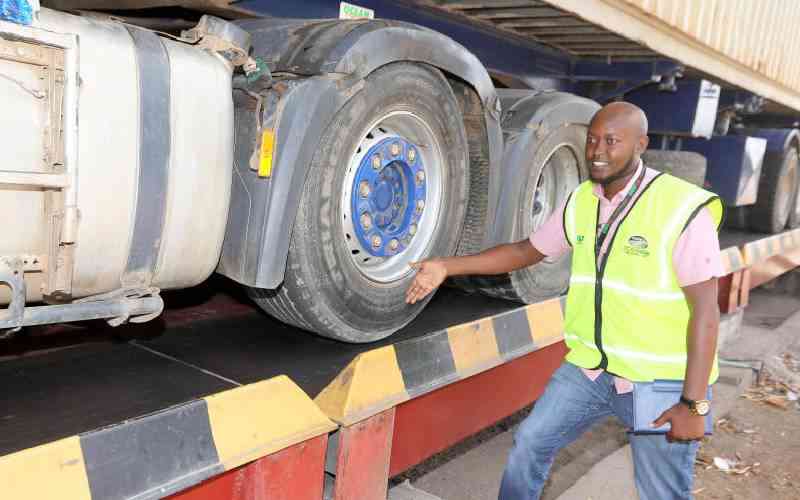
The High Court has identified a discrepancy between the weight of cargo vehicles recorded in logbooks and the actual weight in a legal battle over the overload menace.
Justice Reuben Nyakundi said that the weight discrepancy between what is registered in the log book and inspection report, and the actual vehicle weight, needs to be streamlined to ensure accuracy.
The Judge, however, said that although the weight discrepancy requires administrative action, it does not constitute a violation of the Constitution.
“Upon careful review, the alleged constitutional violations appear to be more accurately characterised as disagreements with administrative decisions rather than fundamental breaches of constitutional rights and as such after thorough analysis, this court finds that the petitioner has not established the constitutional violations alleged with the precision required under Anarita Karimi Njeru.”
“The weight discrepancies, while requiring administrative attention, do not constitute constitutional breaches,” said Justice Nyakundi.
The case was filed by John Waithaka Thuo against Kenya National Highway Authority (KeNHA) National Transport and Safety Authority (NTSA), Kenya Bureau of Standards and vehicles manufacturer- Master Fabricators Limited.
In the case, Thuo told the court his driver was on May 22, 2022, accused by KeNHA of carrying excess cargo between February 2, 2019 and December 21, 2021.
He said that the driver was then charged at the Eldoret Law Courts for using a vehicle on the road with a load greater than what is stipulated in the law.
Thuo explained that his vehicle is a category two, which has a maximum axle load of 18000 kilos. He argued that it could not have carried excess weight as the NTSA inspection report indicated that the gross weight of the vehicle was 13,000 kilos while 8000 kilos as tare weight and 5000 kilos load capacity.
At the same time, Thuo stated that at the time he purchased the vehicle from the manufacturer, its log book indicated that the tare weight is 11000 kilos, 5000 kilos as the load capacity, giving it a gross weight capacity of 16000 kilos.
He said that the differences in the inspection report and the log book were occasioned by failure to weigh the vehicle to ascertain the actual weight.
Thuo asserted that since the time the bus body was built by Master Fabricators, he had not added or removed any part.
He said that he had another case before the Kisumu High Court, facing the same challenge of the exact weight being more than what is on the log book.
Thuo argued that he had not been allowed to defend himself or raise the discrepancies as a way of clarifying that there was no excess weight carried by his vehicles.
Stay informed. Subscribe to our newsletter
He stated that when the vehicle was eventually weighed following a court order, it emerged that it was 13850 kilos while the logbook indicated that the true weight was 11,000 kilos.
Thuo said that he had opted to move to court to protect other Kenyans from going through his predicament. He claimed that the detention of the vehicles was malicious.
Master Fabricators in its response said that it had made Thuo’s vehicle based on the standards set by the NTSA. The firm told court that after fabrication, it released the vehicle to Thuo for subsequent processing. It stated that when the vehicle was inspected, there was no additional weight or reduction of the same.
KeNHA argued that Thuo had failed to annex in his case the motor vehicles log books for the court to ascertain the alleged wrong entries.
Further, it argued that Thuo failed to point out with precision, the remedial measures he took to ensure the anomalies are corrected.
The authority asserted that overloads are not only economic cries against expensive socio-economic road assets, but also transgressions against the sanctity of human life, due to the carnage experienced on roads as a result of overloaded vehicles failing to manage their weight, losing control, or damaging roads, leading to uneven road surfaces and eventual fatal accidents.
Kebs argued that there were established weighing procedures and standards, which Thuo had not challenged in court.
Justice Nyakundi said that the re-weighing ordered by the court indicated that the weight was higher than that in the logbook.
According to the Judge, the finding validated KeNHA’s enforcement concern that with the actual weight of 13,850 kilos, it could only carry 4150 kilos as the cargo before reaching the maximum allowable weight of 18,000 kilos for a two axle vehicle.
However, he pointed out that the cargo load was less than 5000 kilos, which is recorded both in the logbook and the inspection report.
“The petitioner's argument that discrepancies prove improper weighing must be weighed against the possibility that the discrepancies actually validated the need for proper weight verification and enforcement action,” he said.
According to the Judge, although Thuo had raised concerns about procedural challenges, which deserved consideration, the re-weighing of the vehicle did not support his case but validated regulatory concerns about vehicle compliance.







